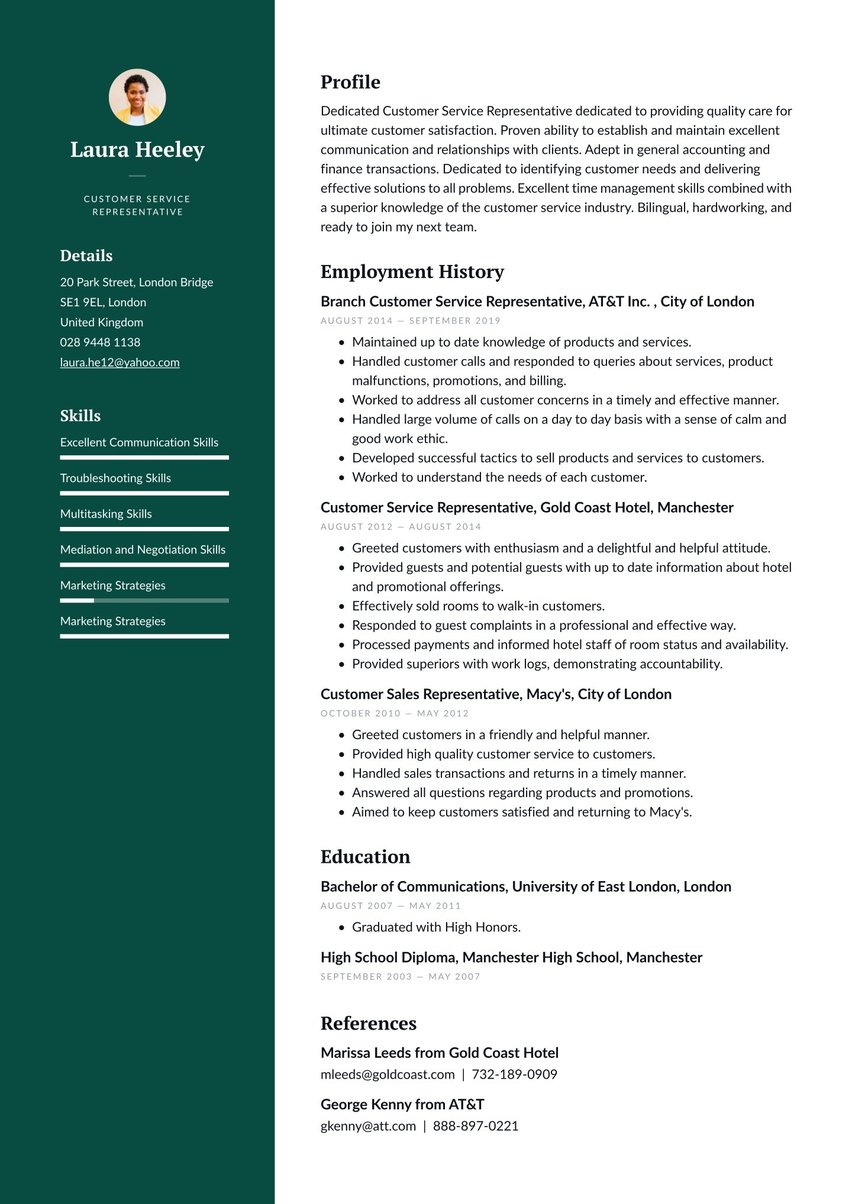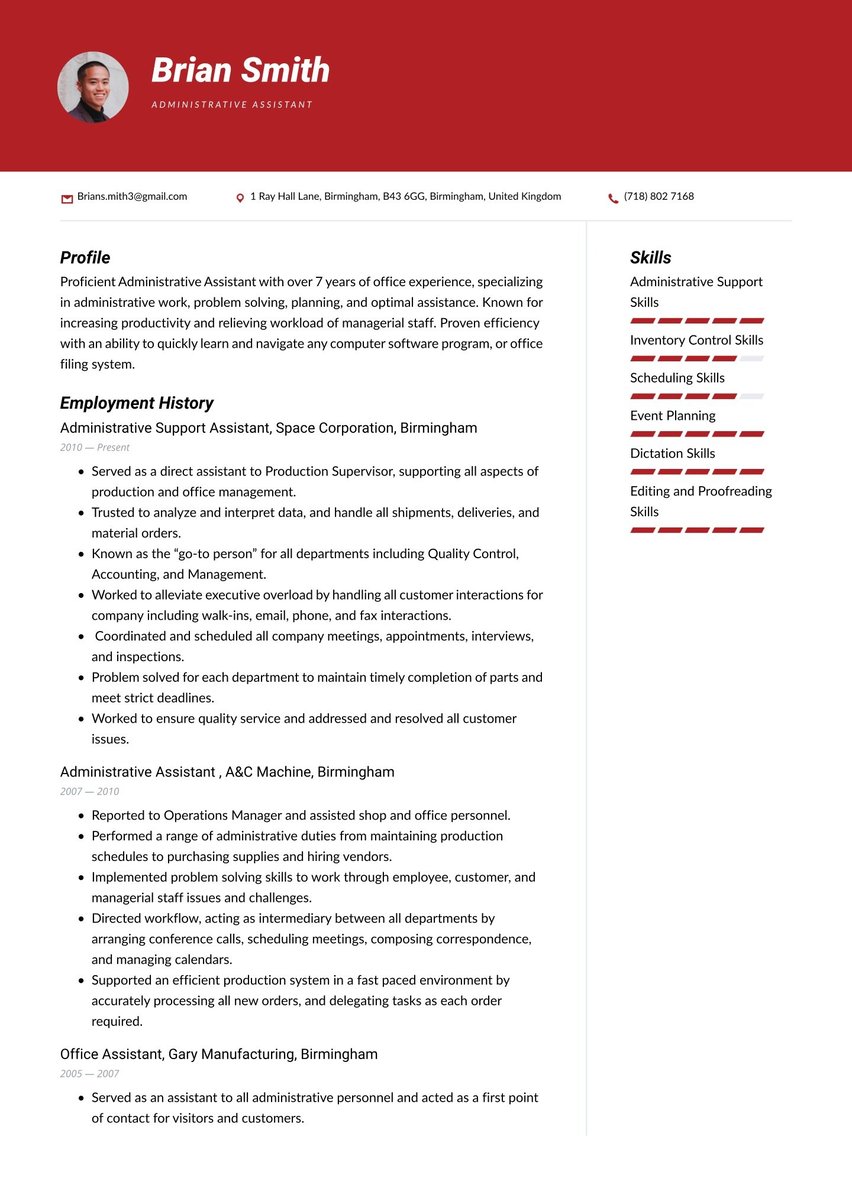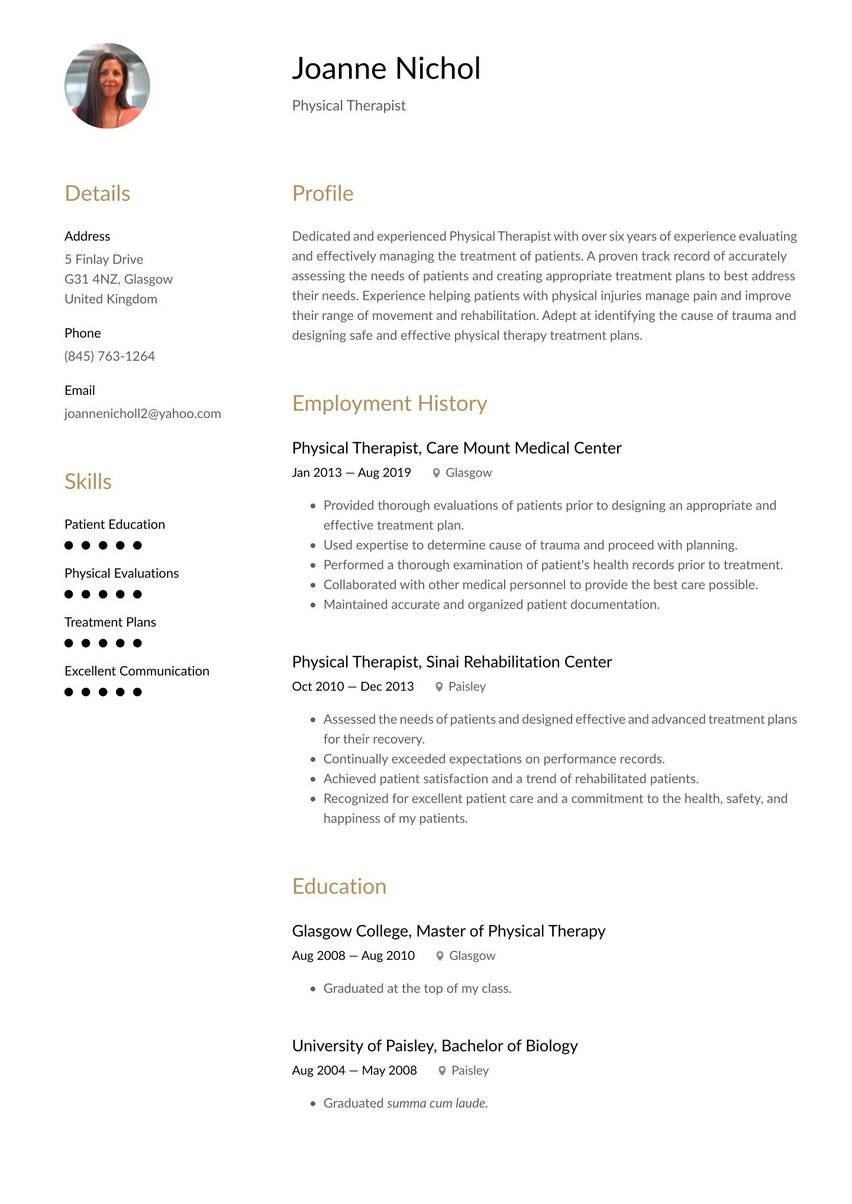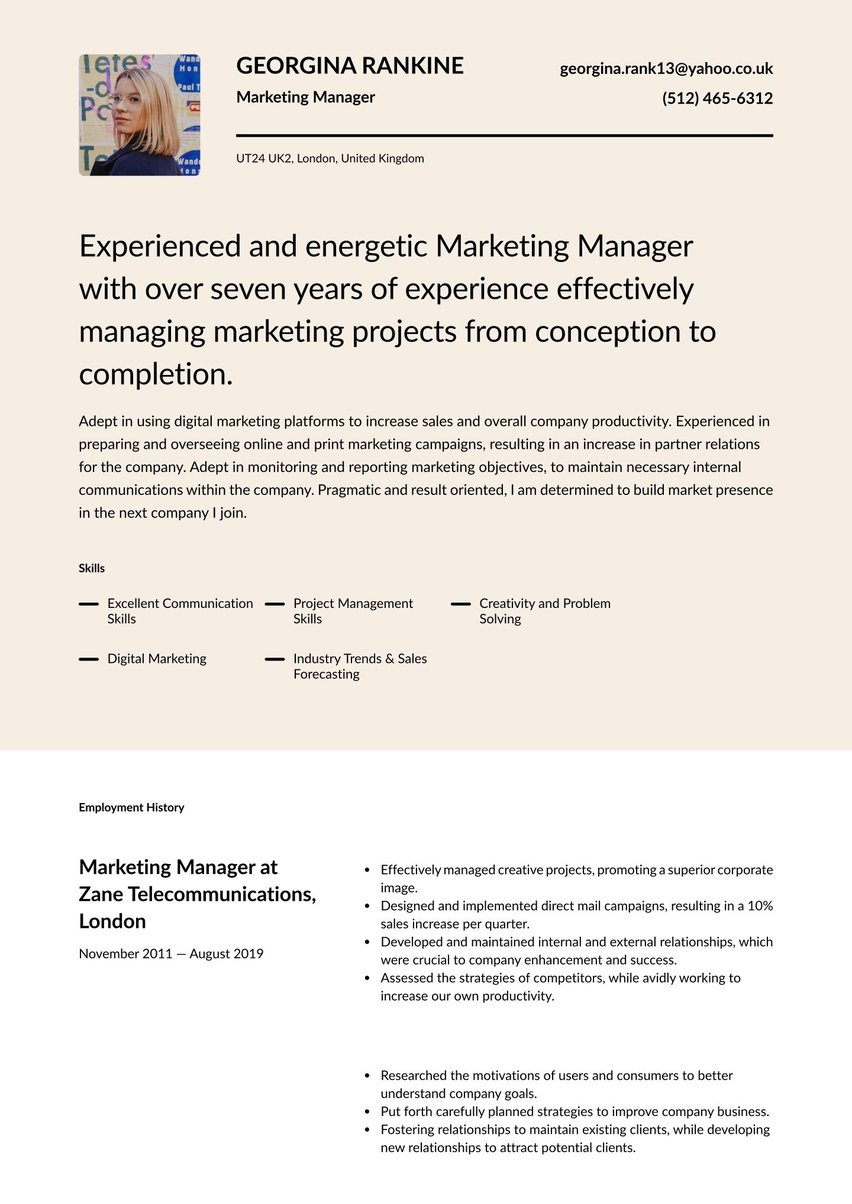Meticulous and dedicated translator with over 8 years of experience in Spanish to English and English to Spanish translations. Extensive background in literary, legal, scientific, website, and technical translations.
03/2016 - present, Senior Translator, TransPerfect, London, UK
- Oversee team of five translators in timely planning and delivery of translation projects.
- Assisted with several major contracts with various tech and pharmaceutical companies.
- Contributed extensively to development of company's in-house training program for new translators.
06/2012 - 02/2016, Translator, SDL, Maidenhead
- Specialised in literary translations, working on several acclaimed novels.
- Assisted with localization of websites for Spanish-speaking audiences.
- Consistently maintained 99% client satisfaction rate throughout tenure.
- English
- Spanish
- Proofreading & Editing
- Cultural Awareness
- Writing & Grammar skills
- Transcription Skills
- Translation Software
- Project Management
- Documentation & Recordkeeping
- Book Translations
- Team Leadership
A well-written translator CV speaks the same language as the hiring manager. It needs to be polished and convey the eye for detail which is needed to be successful in this profession. After all, in addition to your love for languages and communication you actually possess expertise in both! What better way to demonstrate that than crafting a standout CV?
Despite the variety of skills you require as a translator, it can be quite an isolating role that involves you, yourself, and your computer. But just because you’re used to working autonomously doesn’t mean you won’t need a helping hand now and then.
That’s where we come in. Here at Resume.io, we’ve got a knack for helping job seekers land the jobs they’d set their sights on. Our guides and CV examples cover dozens of professions – so why not let us help you dot the i’s and cross the t’s on your next application?
This CV guide, along with the corresponding CV example will cover the following topics:
- What does a translator do?
- How to write a translator CV (tips and tricks)
- The best format for a translator's CV
- Advice on each section of your CV (summary, work history, education, skills)
- Professional CV layout and design hints.
What does a translator do?
As a translator, you must be fluent in one or more languages and will need to have knowledge of the culture in the relevant country, which is usually gained from either working or living there for some time. Your responsibilities will mainly consist of reproducing texts clearly and accurately from the source language into the target language.
You may need to use specialist translation software, such as Trados Studio, so knowledge of the main software packages available is crucial. Research could also play a significant part in your day-to-day life as you look up legal, technical, or scientific terms. You will also be expected to liaise with your clients to clarify any unclear points before finally editing and proofreading the final translated version of the material.
How much do translators earn?
According to the National Careers Service, the average base salary for translators in the UK is currently variable, most likely due to the typically freelance nature of the job. However, you can expect to work from 37 to 39 hours and that time may include attending appointments or events.
Translator job market and outlook
Due to the increased use of machine translation, the “post-editing” role has become more common in the industry and now translators are often responsible for correcting and refining content translated by a machine.
This ultimately goes hand in hand with the need to have your finger on the pulse and be both aware of and skilled in the use of the most popular translation software in the industry.
Currently, the most requested language across every sector in the UK is German, followed by French and then Spanish.
As for the industries themselves, the top three sectors that require a second language are customer service, customer support and call centre, sales, account management and business development, and education.
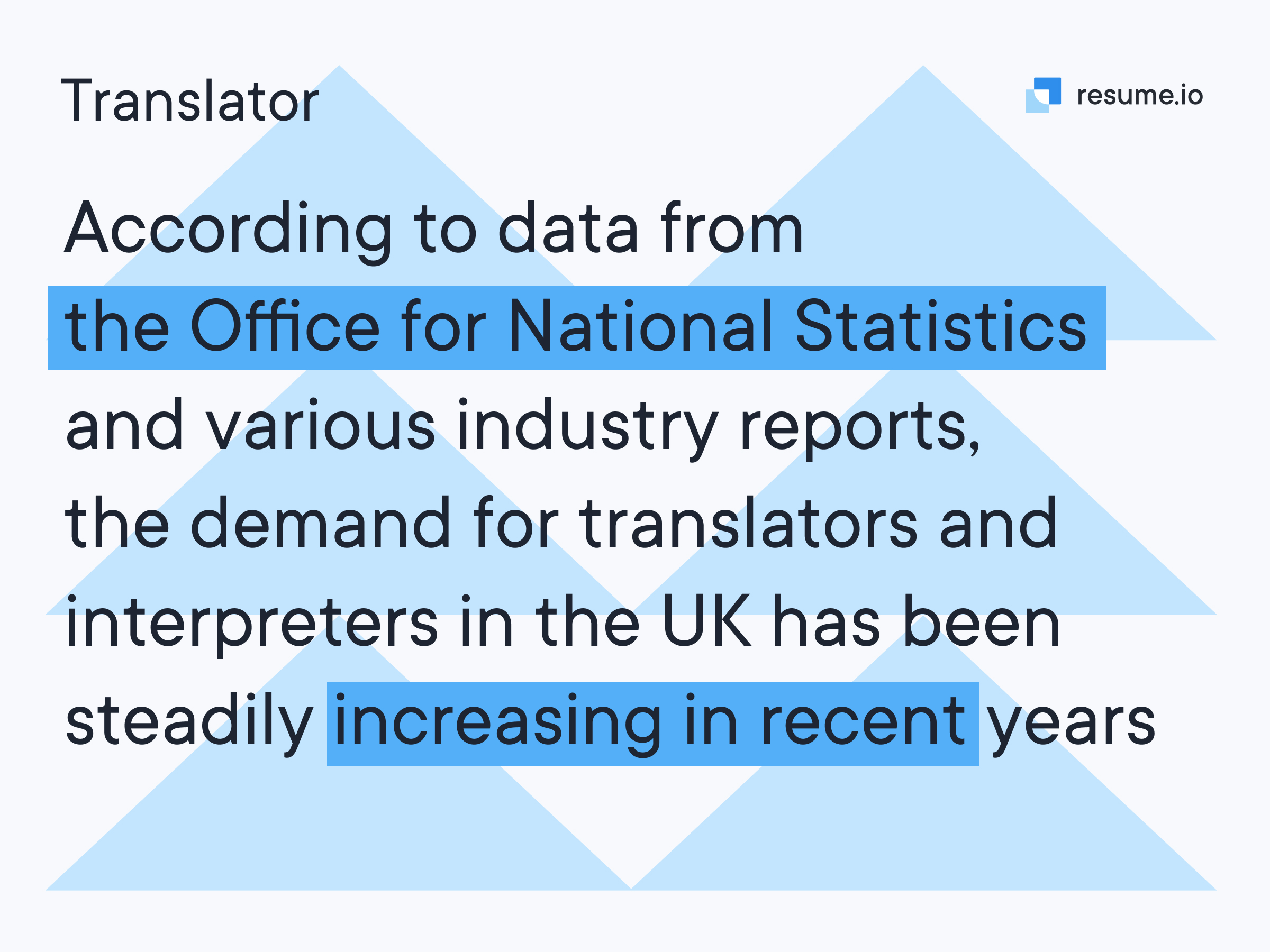
How to write a translator CV
Before you can begin writing your translator CV, you need to understand what sections to include. Your CV should contain the following elements:
- The CV header
- The CV summary (aka profile or personal statement)
- The employment history section
- The CV skills section
- The education section
There’s no reason why you can’t approach writing your translator CV in the same way that you would any other project for a client. Get your head down and research what it is that the company or client is looking for in an applicant and translate that into your CV’s content.
Approach it methodically and with your target audience in mind to ensure your CV doesn’t slip through the cracks. Here are some of the key steps to tick off and questions to contemplate before starting to spell it out on the page:
- Research the project, client or company that you are applying to and evaluate how your skills and experience align with what they’re looking for in a candidate
- Identify keywords in the job description that you could include in your CV to optimise it for ATS screening software and catch a hiring manager’s eye
- Be clear about how much experience you have in a sector. Are you really the most competitive candidate when it comes to translating material on a particular topic? If not, what are some other ways you can make your candidacy compete with those who are?
Speaking the language of the ATS
The language of the Applicant Tracking System (ATS) is the first one you need to be fluent in when writing your translator CV. The ATS is an algorithm that will scan your CV for the presence of the most important keywords. Only the highest ranked CVs will make it in front of the eyes of the hiring manager.
So, scour the job ad and make sure you reflect the language and keywords used in the job description and desired skills!
Choosing the best CV format for a translator
The best CV format for the majority of job seekers is the reverse chronological format. In a nutshell, this means the format mostly focuses on the employment history. However, translators who are new to the industry could consider other alternatives or even hybrid formats.
CV header
Your CV header should be clear and at the top of your CV. The reasons are simple. Firstly, it makes your information easily accessible so that recruiters can reach out to arrange an interview. Not to mention it highlights that you know how to prioritise important information and guide the reader through it.
CV summary example
In your CV summary you want to capture the interest of the hiring manager. Use your way with words to your advantage here and make sure that it’s concise and not too dense. Three to four snappy sentences that respond to the requests in the job description should do the trick.
If you’re worried that your experience is quite broad and you have worked on numerous, different projects then use this section to highlight your most relevant experience concerning the position that you are applying to.
Compare the job description to the work in your portfolio with an eye to the similarities. You will want to think about the industries you’ve worked in, as well as the work you undertook. Is it research-heavy or does it have a more editorial focus?
Meticulous and dedicated translator with over 8 years of experience in Spanish to English and English to Spanish translations. Extensive background in literary, legal, scientific, website, and technical translations.
Don’t worry if this task feels overwhelming — we have tons of other CV examples for other professions that you can take a look at for some inspiration. Get the ball rolling by taking a peek at our:
Employment history sample
In this section, respect the chronological format by placing your most recent position first. The reader can then follow your professional history back in time. For each position include your job title, employer, dates of employment, and location.
Underneath each heading you can detail your contribution in more detail with dynamic bullet points. Using dynamic action verbs that highlight the key skills needed in your job will ensure each snippet of your experience is short and sweet. As a translator, these could look something like “utilised”, “provided”, “performed”, or “created”.
Senior Translator at TransPerfect, London, UK
March 2016 - Present
- Oversee team of five translators in timely planning and delivery of translation projects.
- Assisted with several major contracts with various tech and pharmaceutical companies.
- Contributed extensively to development of company's in-house training program for new translators.
Translator at SDL, Maidenhead
June 2012 - February 2016
- Specialised in literary translations, working on several acclaimed novels.
- Assisted with localization of websites for Spanish-speaking audiences.
- Consistently maintained 99% client satisfaction rate throughout tenure.
CV skills example
You know better than anyone what skills it takes to be a top-class translator and that should be evident in your CV. Stripped back, your job is fundamentally rooted in communication. There is a lot more than meets the eye that goes into being successful at communicating in multiple languages.
In this section, break down your expertise into a CV skills list which incorporates hard skills and soft skills that have the last say as to why you are the best person for the job. At a glance, your hard skills are what can be more easily quantified such as your training to be a translator. Your soft skills, on the other hand, are what you are bringing to the table as an individual. These are the things that can’t necessarily be taught, making them your trump card.
Soft skills vs hard skills
A good translator has a strong handle on both soft and hard skills. Make sure your application is always on top of the pile by including them on your CV.
Time management, self-management, and focus are up there with the most important soft skills needed to excel as a translator. While there are plenty of courses and demos to help you get to grips on the newest translation software, your rapport with your clients will depend on how well you’ve honed those personal attributes.
Don’t forget to list the languages that you speak, too. “Multilingual” is too ambiguous a term, especially when your proficiency in languages is the crux of your job. Check out a CV sample for the skills section below. Remember that you can add a new section specifically to list the languages that you speak if you want to list more detail or they are numerous.
- Proofreading & Editing
- Cultural Awareness
- Writing & Grammar skills
- Transcription Skills
- Translation Software
- Project Management
- Documentation & Recordkeeping
- Book Translations
- Team Leadership
Translator CV education example
Translators will typically need some form of higher education in translation or languages to take on this role. With that in mind, the education required to get qualified may be extensive. Much like your employment history, it should be listed in reverse chronological order on your CV, and you should include a subheading for every formal qualification.
In each subheading remember to write the name of the qualification, the dates of attendance, the institution you studied at, and its location. The CV sample content below is a good example of how this is done.
MA in Translation and Interpreting, University of Westminster, London, UK
BA (Hons) Modern Languages and Cultures (Spanish), University of Manchester, Manchester, UK
CV layout and design
While your portfolio may speak for itself, a hiring manager will only get the chance to look at it if your CV gets you off on the right foot first. Translation may be a complex and challenging job, but that’s not what should be reflected in your CV’s layout and design.
Think about how you can communicate that complexity neatly. But also don’t stress if this isn’t your forte. You can consider using one of our CV templates, which are both professionally designed and free.
Key takeaways for a translator CV
- Zoom in on your most relevant experience as a translator.
- Prioritise the keywords that will get you past the ATS software and capture the interest of hiring managers.
- Before you start writing, consider how much experience you have in particular sectors.
- Keep your CV layout simple and easy to navigate, especially if there’s a lot of variety in there.






